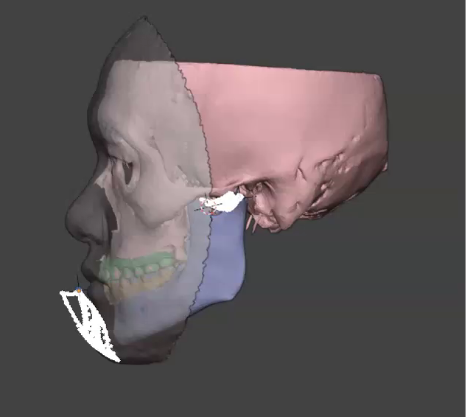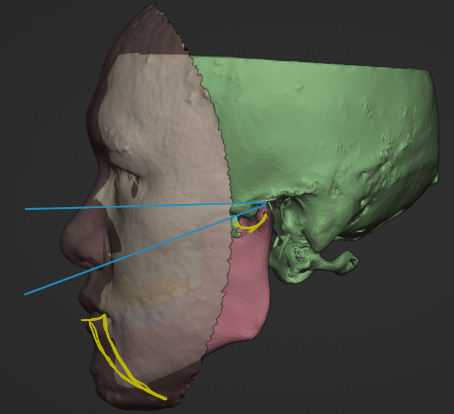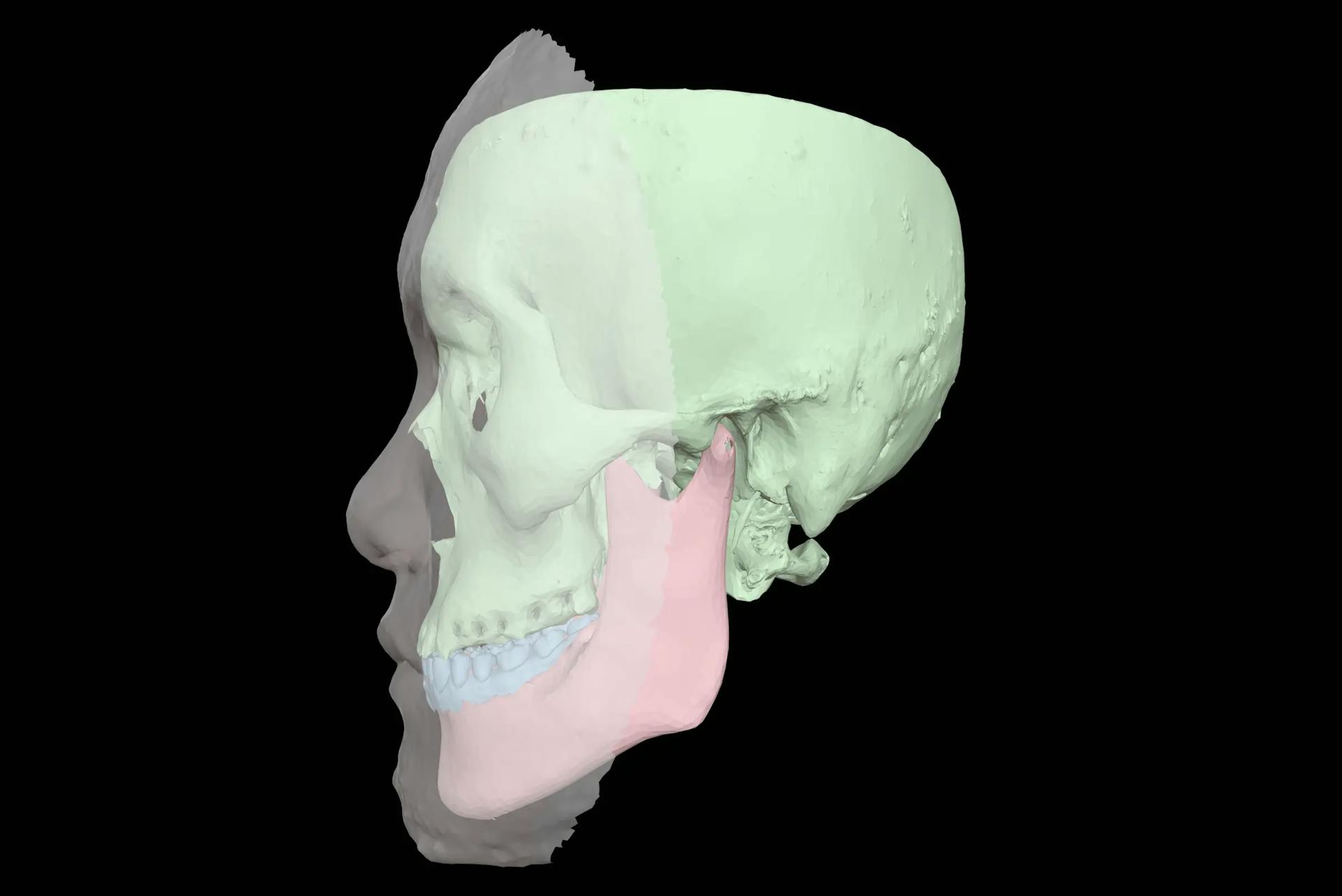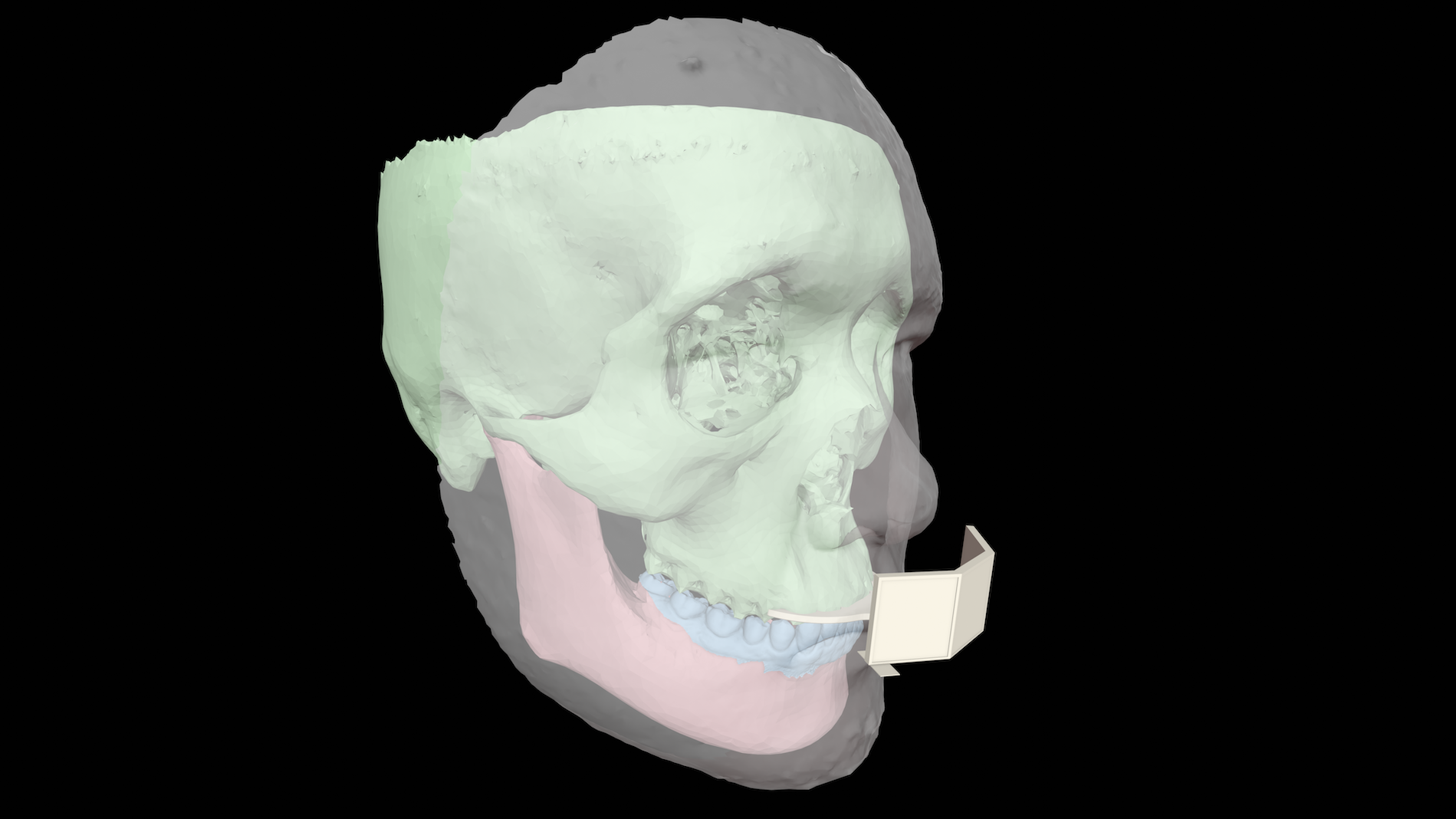AiNaBow

AiNaBow: AiNaBow is a revolutionary product that uses computer vision technology to replace the very expensive and cumbersome conventional facebow. A facebow is a device that records the position of the teeth in relation to the temporomandibular joint (TMJ) and transfers this information to an articulator, a device that simulates the movement of the jaw. This is essential for accurate diagnosis and treatment planning in dentistry, especially for complex cases involving implants, crowns, bridges, and dentures. However, conventional facebows are costly, time-consuming, and uncomfortable for patients. AiNaBow solves these problems by using AI and real-time video analysis to create personalized digital facebows, coupled with in-depth occlusion and TMJ anatomy analysis.
How Our Service Helps Dental Professionals and Patients
Patients
Patients who want to have a better understanding of their oral health condition, treatment options, and expected outcomes, using realistic and interactive simulations and visualizations.
Dental Lab technicians
Dental lab technicians who want to receive accurate and timely information from the dentists, using digital facebow and articulator data to create customized prosthetics and appliances.
Dentists and Orthodontists
Dentists and orthodontists who want to provide high-quality care to their patients, using the latest technology and tools to diagnose, plan, and execute treatments.
AiNaDoctor use cases
#Use Case 1

Task: A dentist wants to make a dental prosthesis for a patient who has missing or damaged teeth.
Problem: The dentist has to use a facebow device to record the position of the patient's upper teeth in relation to the TMJ, and transfer this information to an articulator. This process can be uncomfortable for the patient, time-consuming for the dentist, and prone to errors due to human factors or device limitations. The dentist also has to communicate this information to the dental lab, which may not have the same type or model of articulator as the dentist.
Solution: The dentist uses AiNaBow to create a digital facebow for the patient in minutes. The dentist asks the patient to record a short video of their mouth opening and closing with their mobile phone camera, and uploads the video data to our cloud platform. Our AI-driven facebow analysis module extracts the position of the patient's teeth in relation to the TMJ, and creates a personalized digital facebow that matches the patient's anatomy and occlusion. The dentist can preview and adjust the digital facebow on the 4D virtual patient model, which simulates the patient's facial expression, tooth structure, occlusion relationship and mandibular movement. The dentist can also communicate with the dental lab through our cloud platform, and send them the AiNaBow data along with other relevant information, such as CT scan, intraoral scan, or treatment plan in AiNa Virtual Patient format. The dental lab can then use our other products, such as AiNaGuide, to create the dental prosthesis that matches the patient's digital facebow. The dentist receives the dental prosthesis from the lab and fits it on the patient with high precision and quality.
#Use Case 2

Task: A patient wants to correct their crooked teeth with braces.
Problem: The patient is not sure how long the treatment would take, how much it would cost, and how it would affect their appearance and comfort. They are also anxious about the pain and discomfort of wearing braces.
Solution: The orthodontist uses AiNaSmile to create a 4D virtual model of the patient's smile based on their CT, intraoral scan, face scan, and mandibular trajectory data. The orthodontist then uses AiNaSmile to analyze the patient's occlusion, alignment, and aesthetics, and generate a customized treatment plan that includes the type, duration, and cost of braces. The orthodontist can also use AiNaSmile to show the patient how their smile would look before, during, and after the treatment, using different expressions and angles. The patient can preview and compare different treatment options on their 4D virtual model, and ask questions and give feedback to the orthodontist. The patient can also see the expected treatment outcome and benefits, such as improved oral health, function, and appearance. The patient feels more informed and confident about their decision to undergo braces treatment with AiNaSmile.
#Use Case 3

Task: A patient needs a dental crown for a damaged molar tooth.
Problem: The dentist has to take an impression of the patient's tooth, send it to the dental lab, wait for the lab to design and fabricate the crown, and then fit it on the patient. This process can take several days or weeks, and may require multiple visits and adjustments. The crown may also not match the patient's natural tooth color, shape, or occlusion.
Solution: The dentist uses AI-Generated Dental Crowns and Surgical Guides(AiNaGuide) to create a dental crown for the patient in minutes. The dentist scans the patient's tooth with an intraoral scanner, uploads the scanned data to our cloud platform, and runs our AI-driven treatment design module. The module generates a virtual crown that matches the patient's natural tooth color, shape, and occlusion. The dentist can preview and adjust the crown on the AiNa Virtual Patient model, which simulates the patient's facial expression, tooth structure, occlusion relationship and mandibular movement. The dentist can also communicate with the patient and show them the expected treatment outcome. Once satisfied, the dentist sends the crown design to the dental lab for production. The lab uses a milling machine to produce the crown with high precision and quality. The dentist receives the crown from the lab and fits it on the patient in one visit. The patient is happy with the result and has no discomfort or complications.